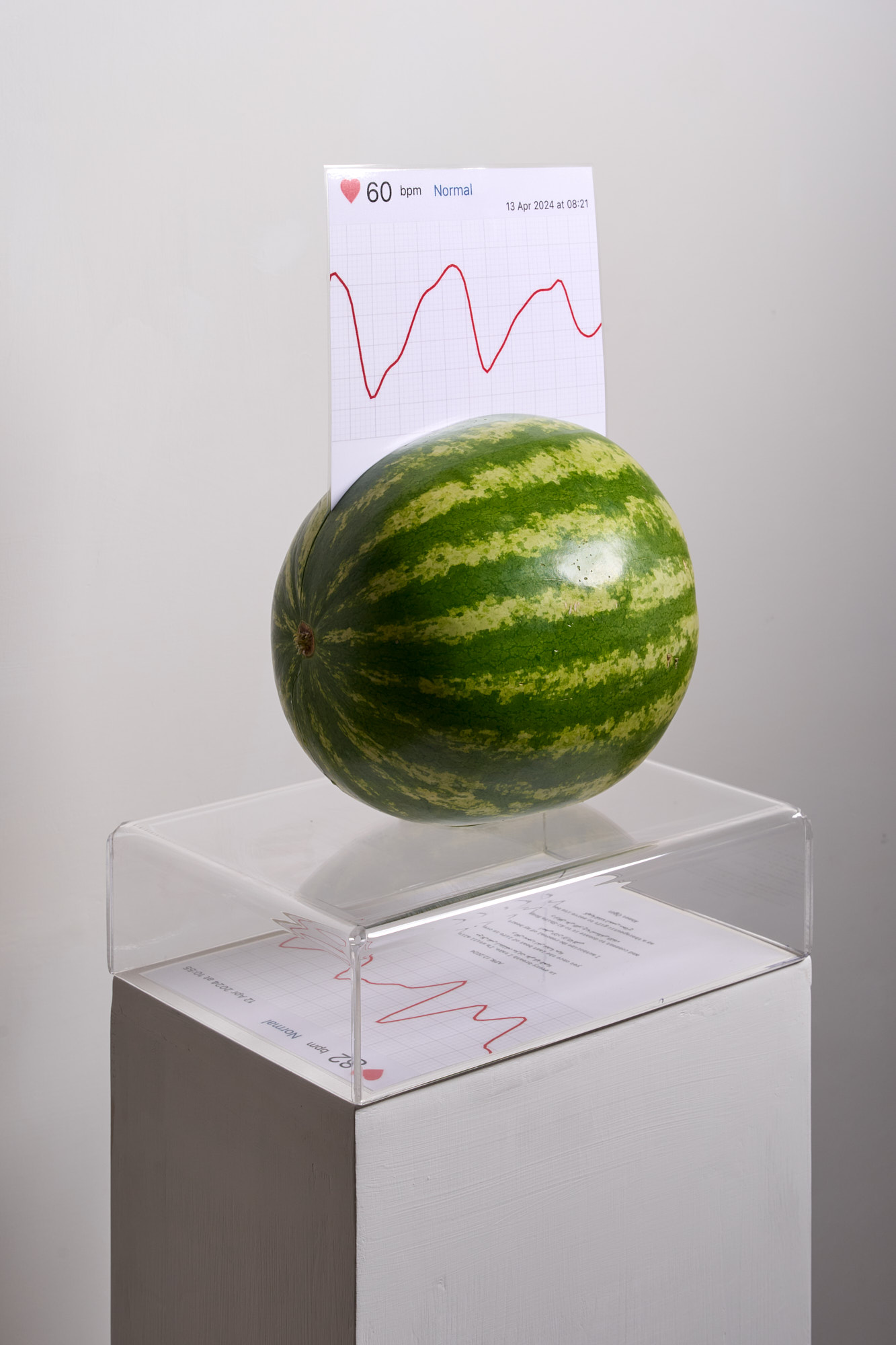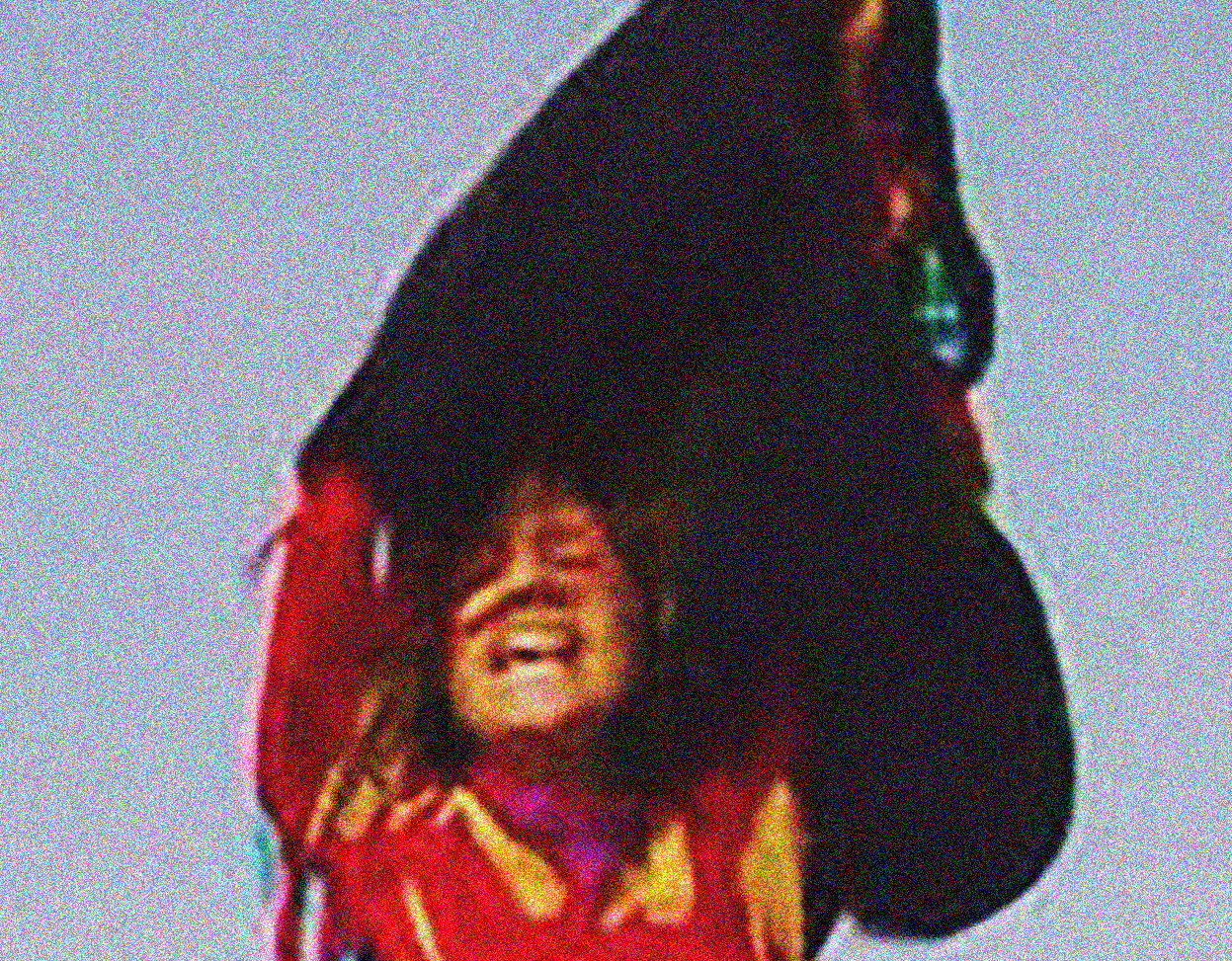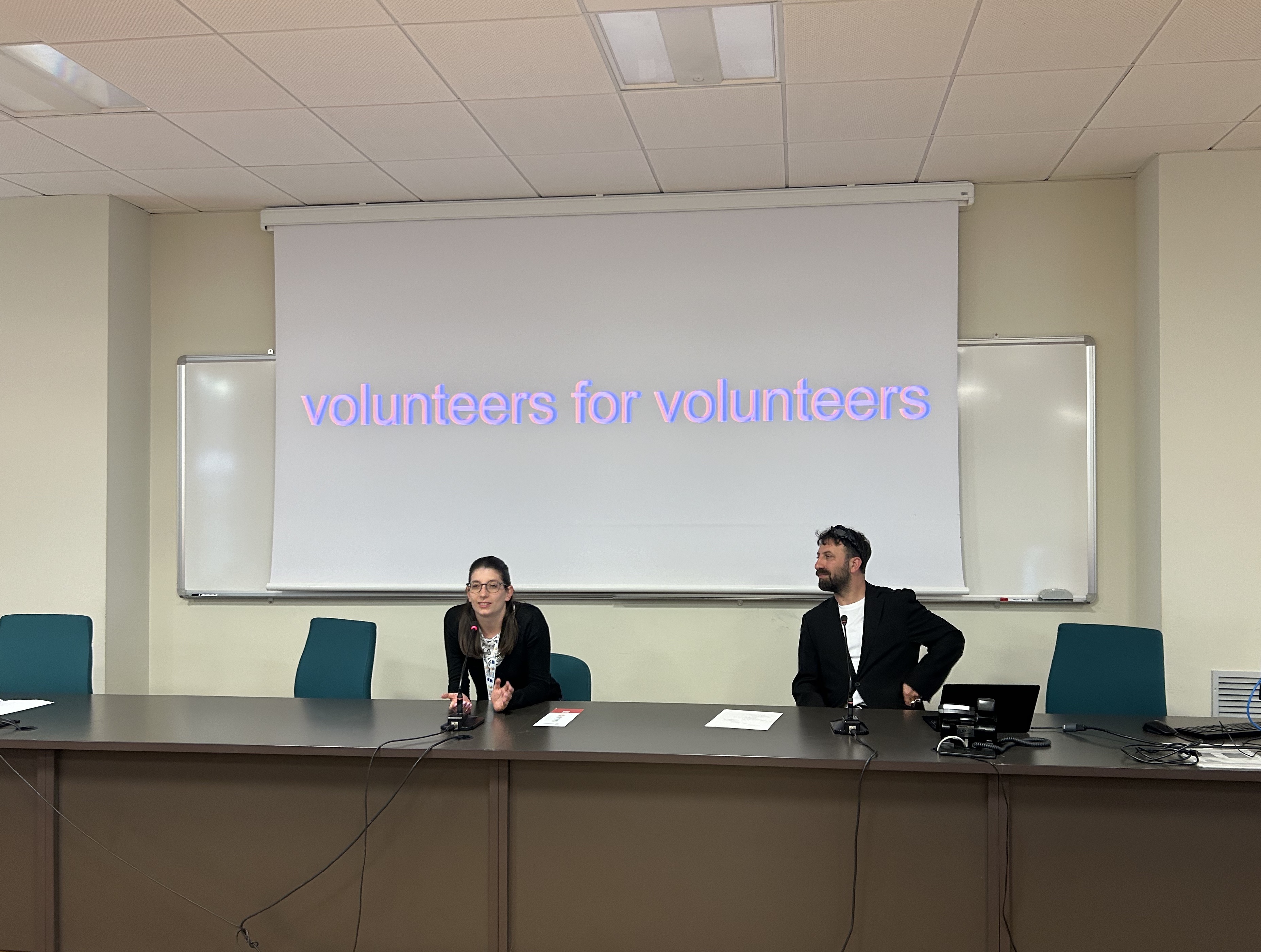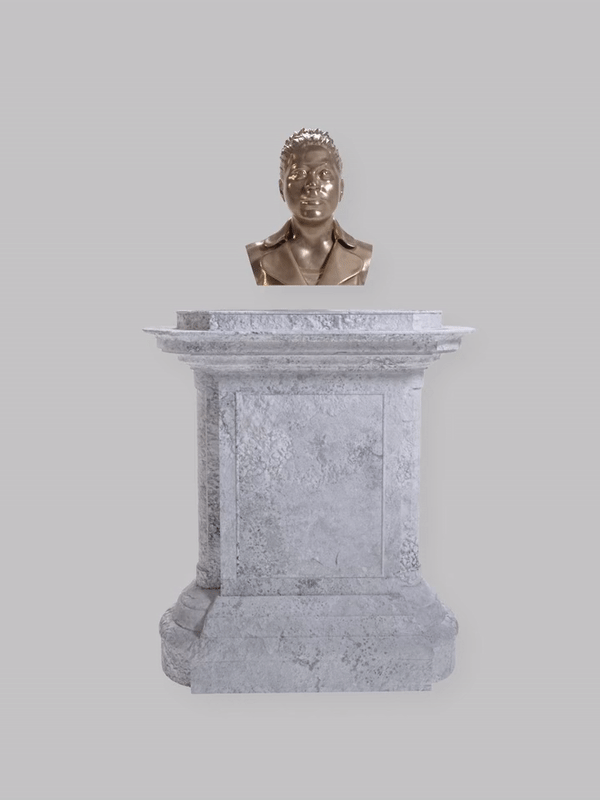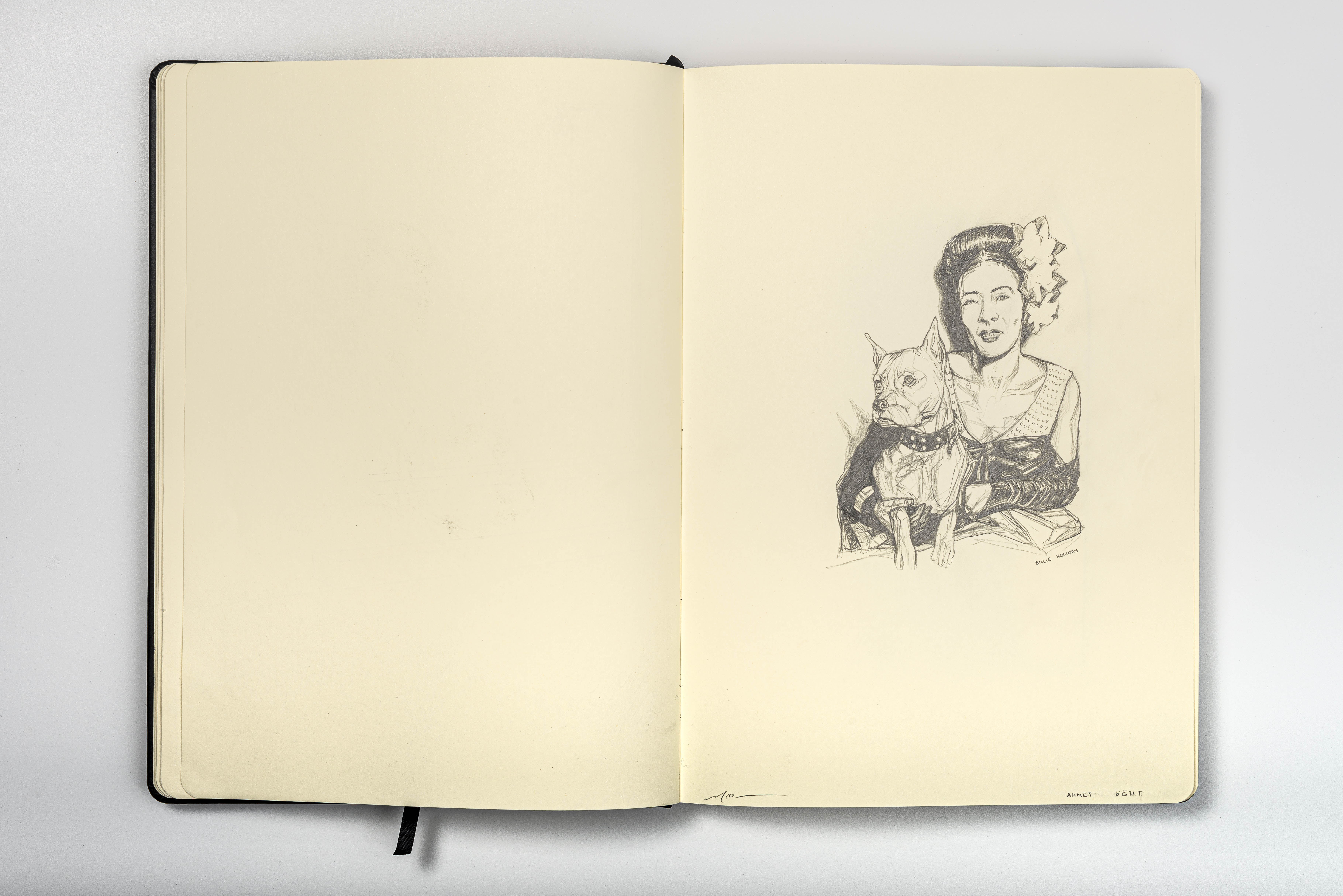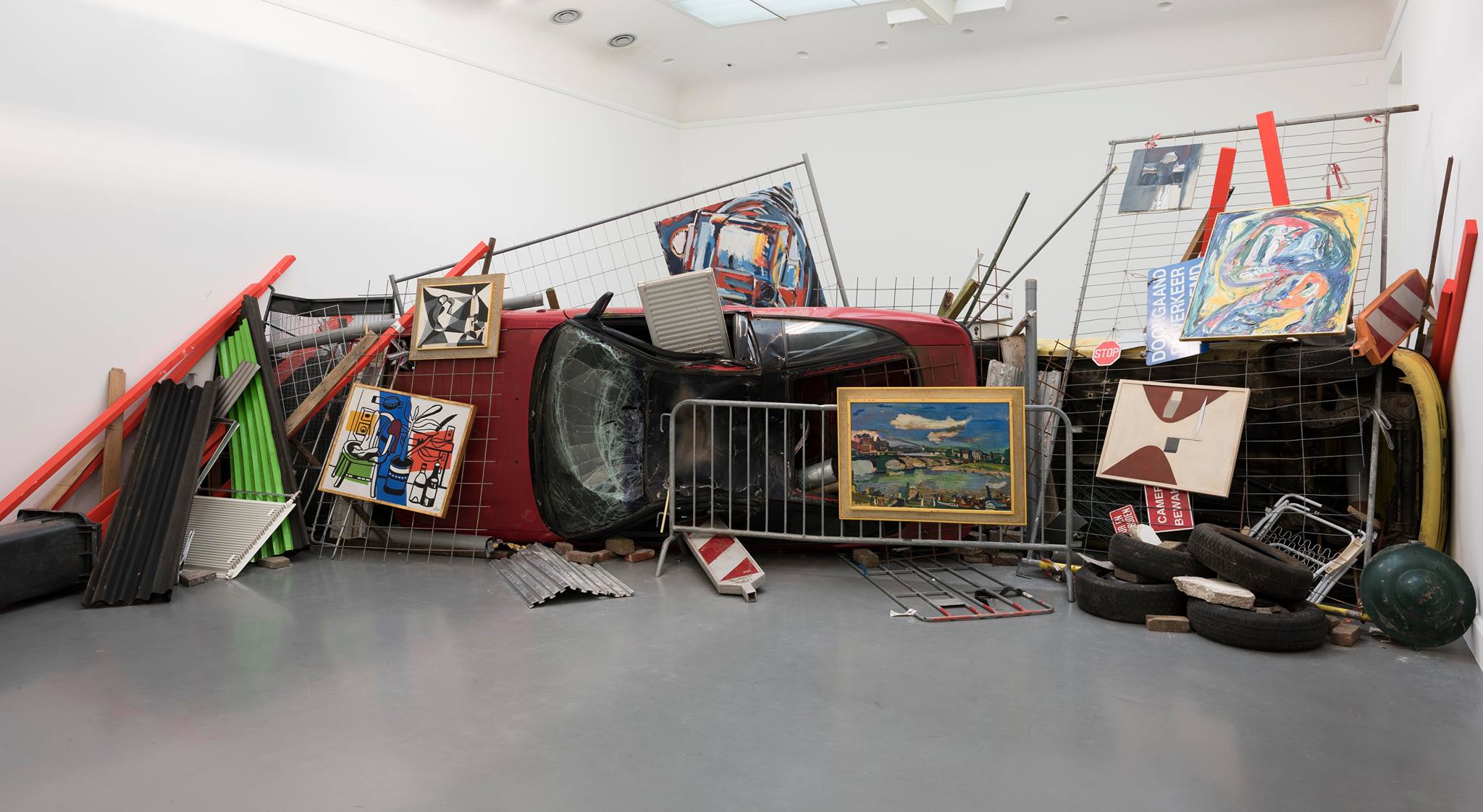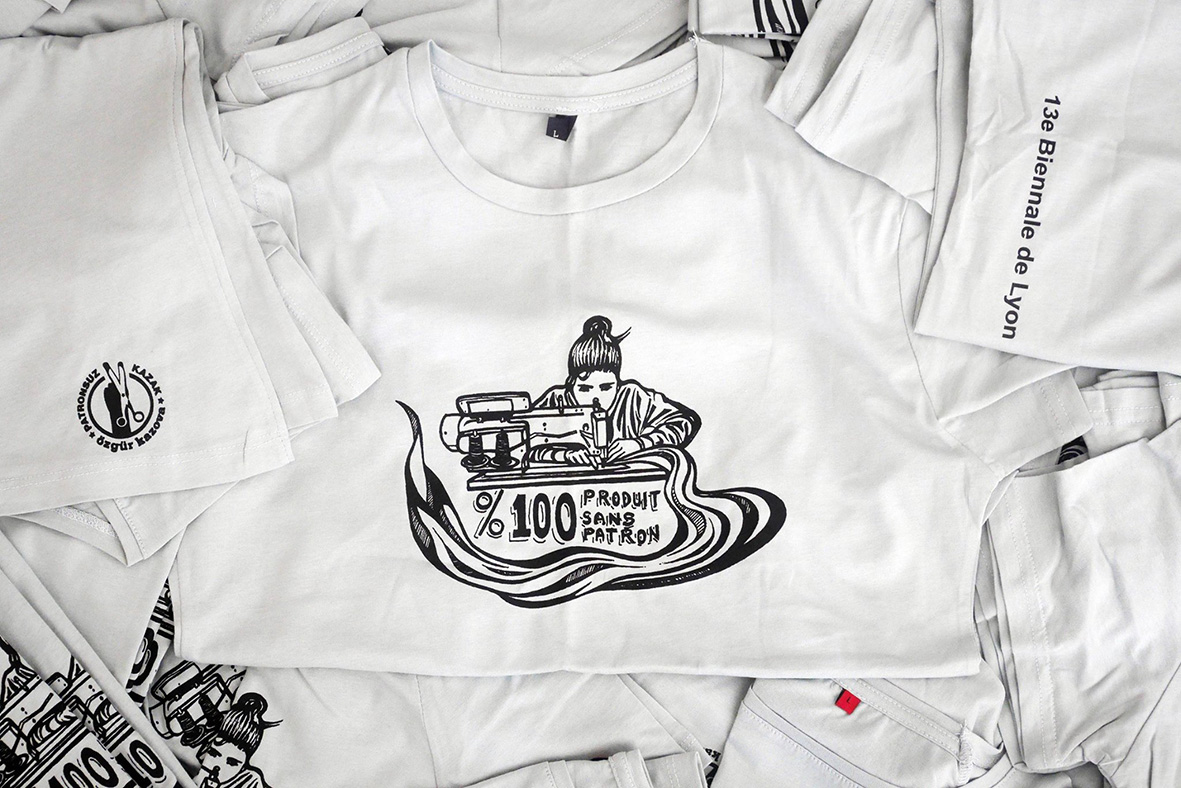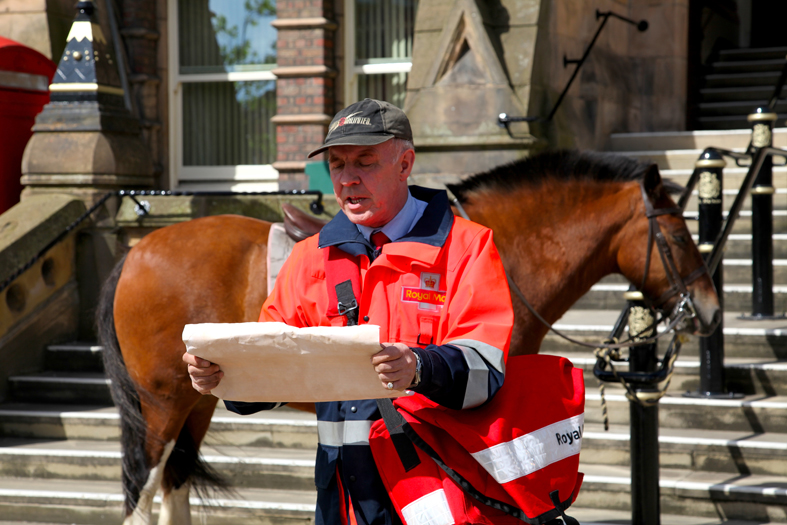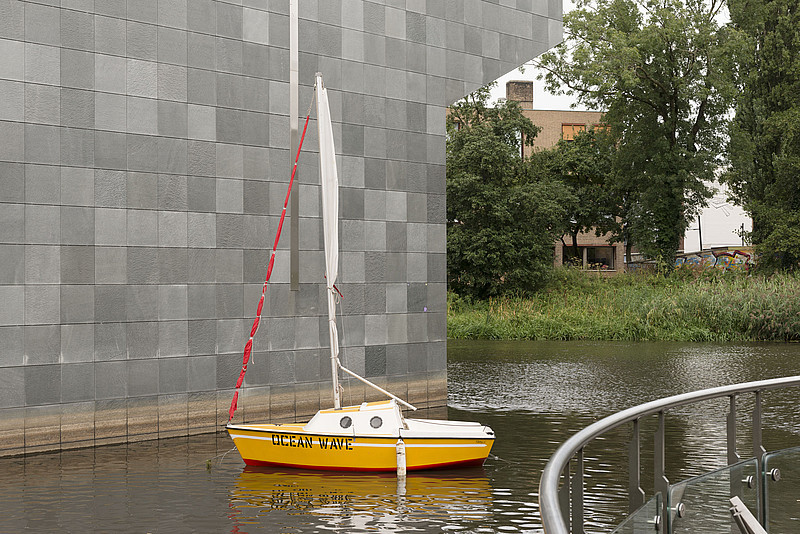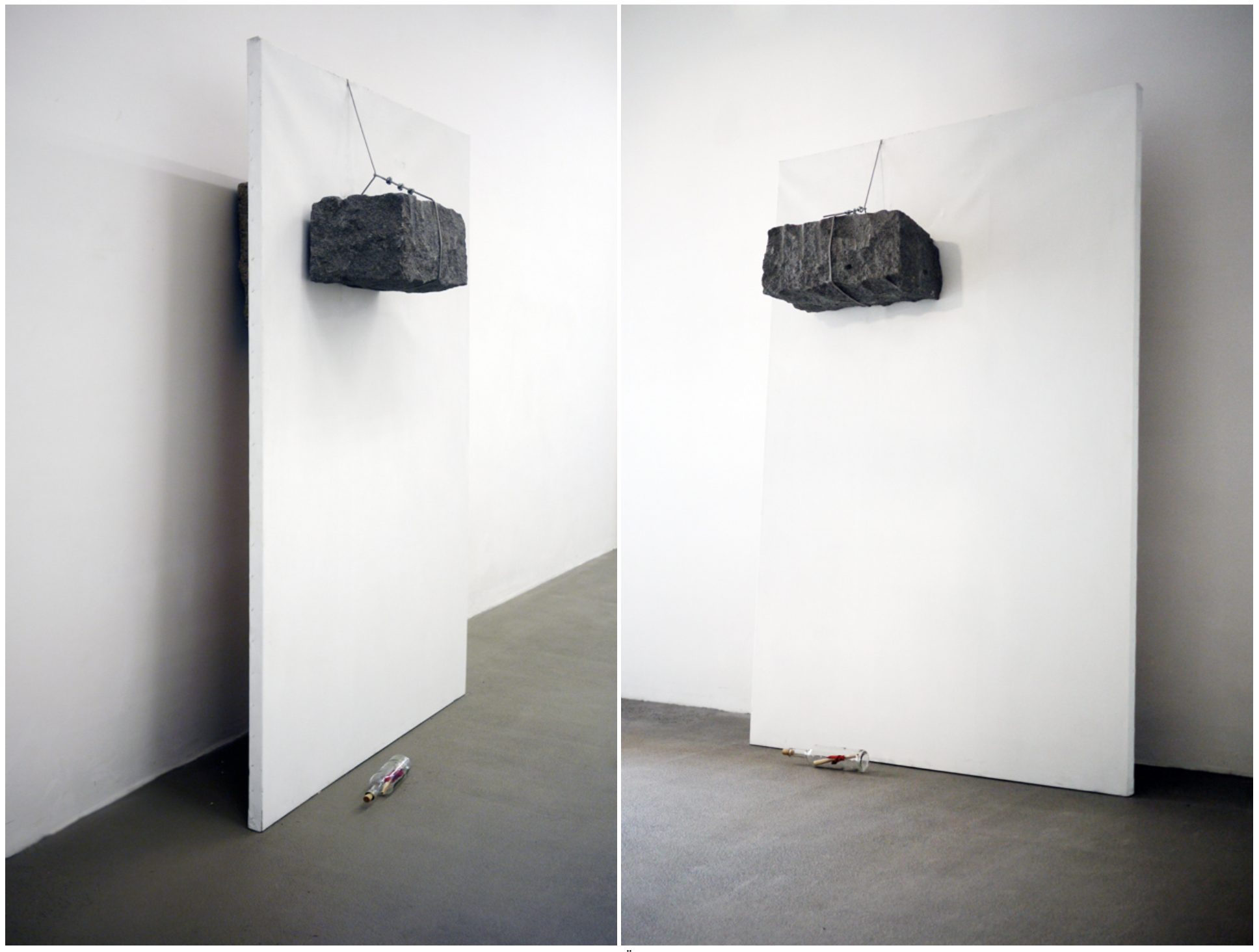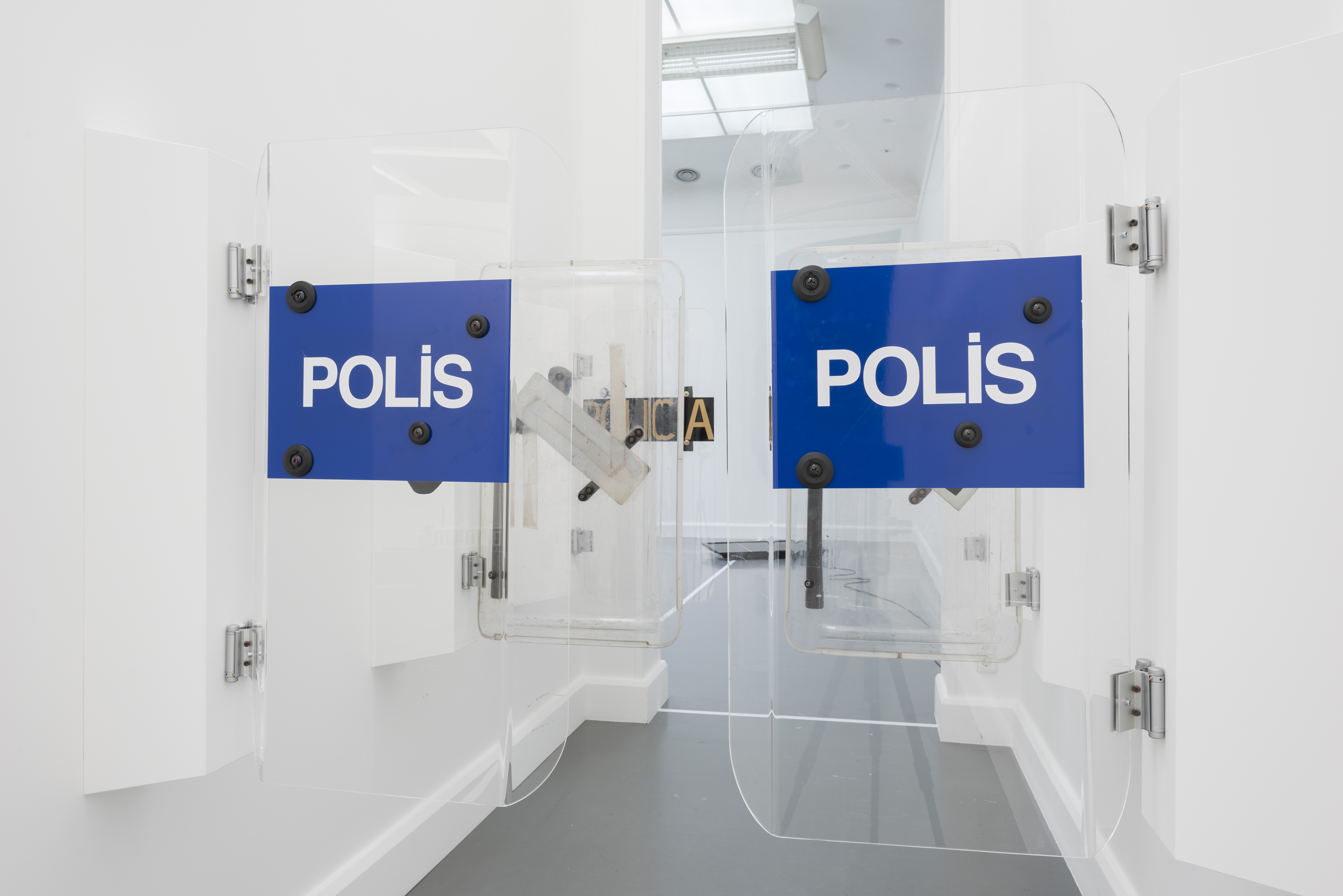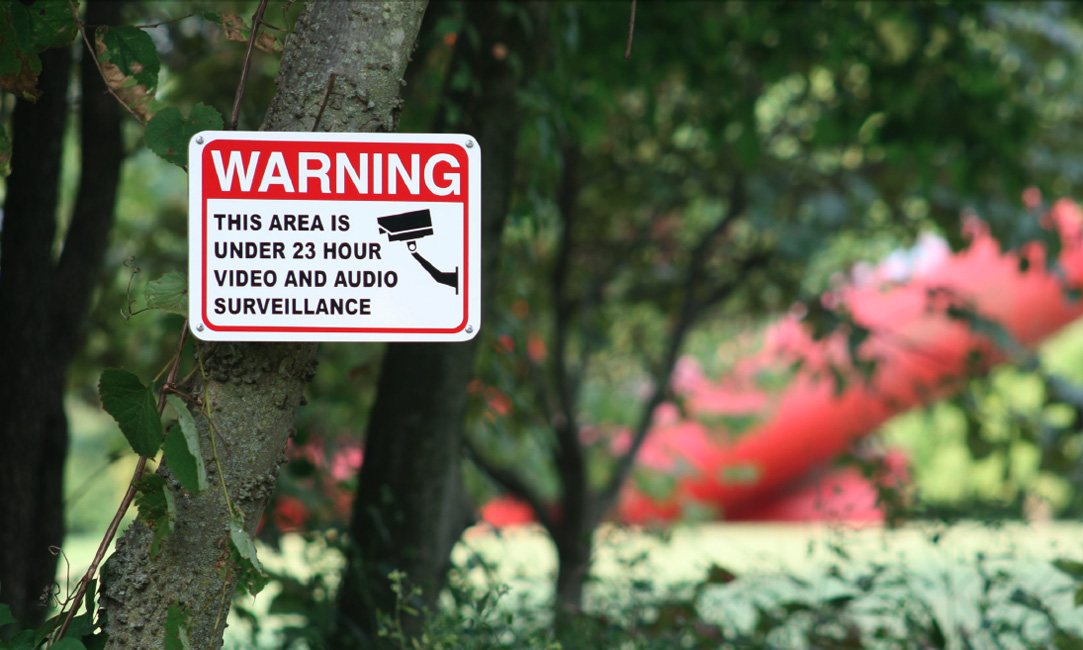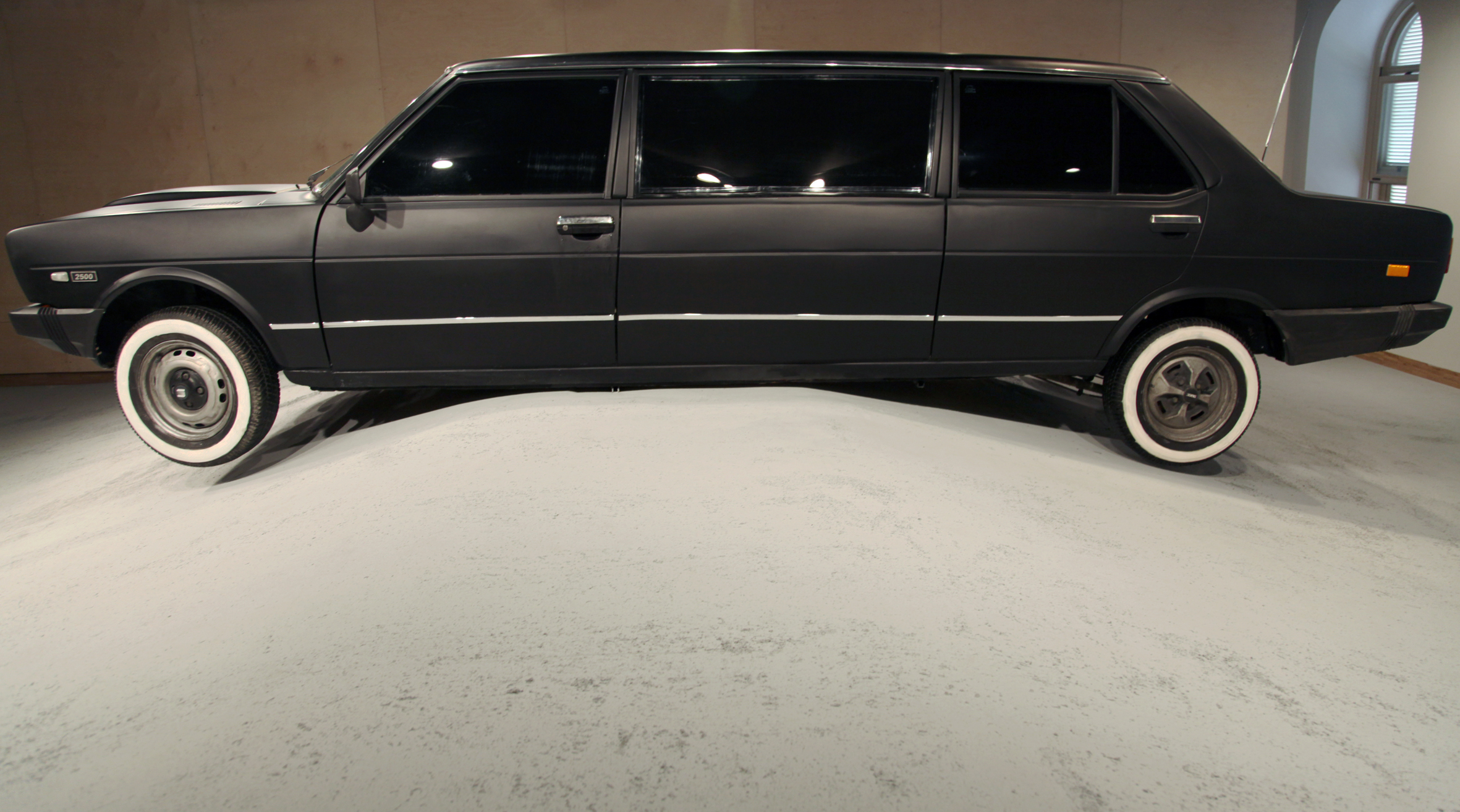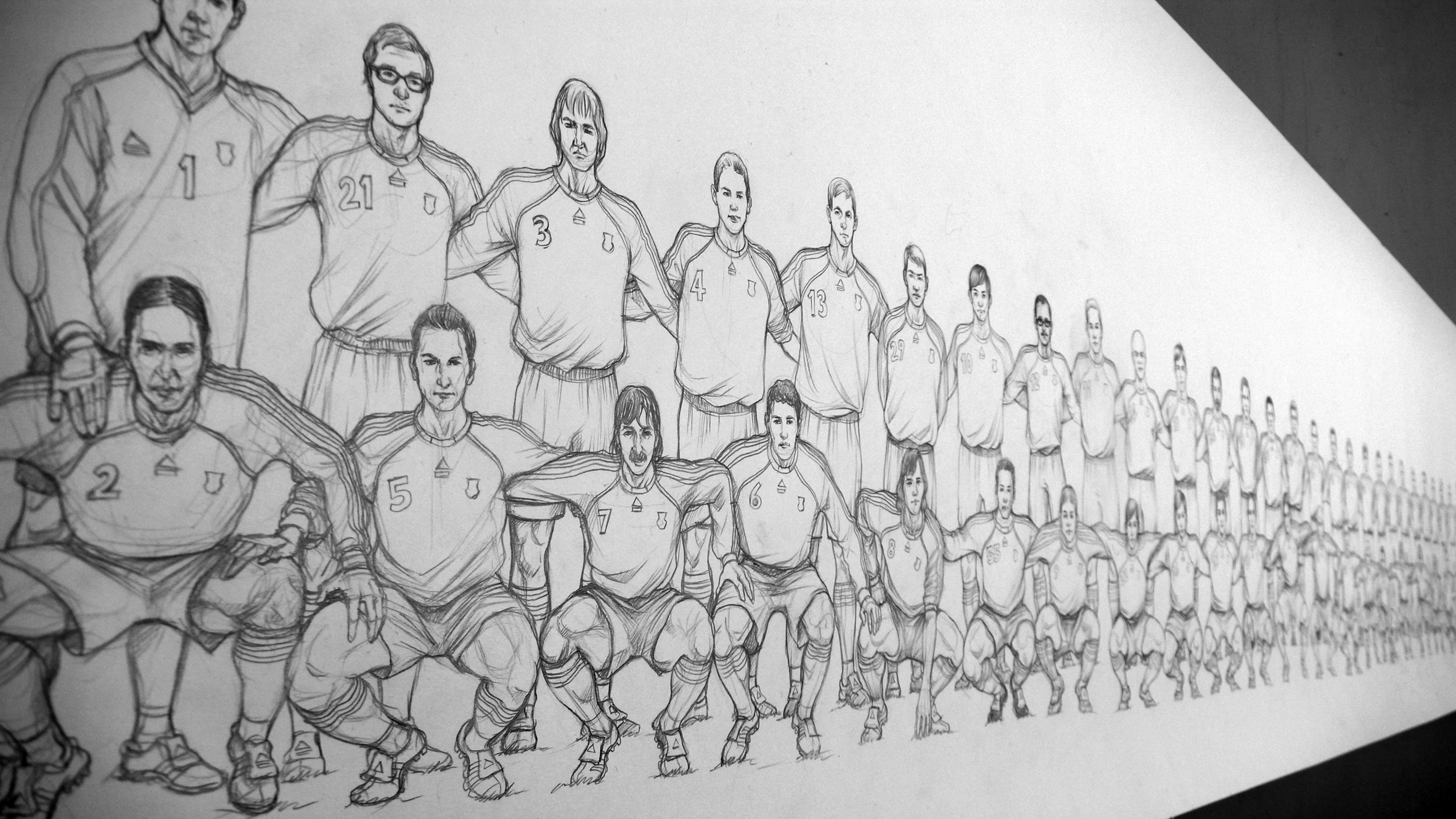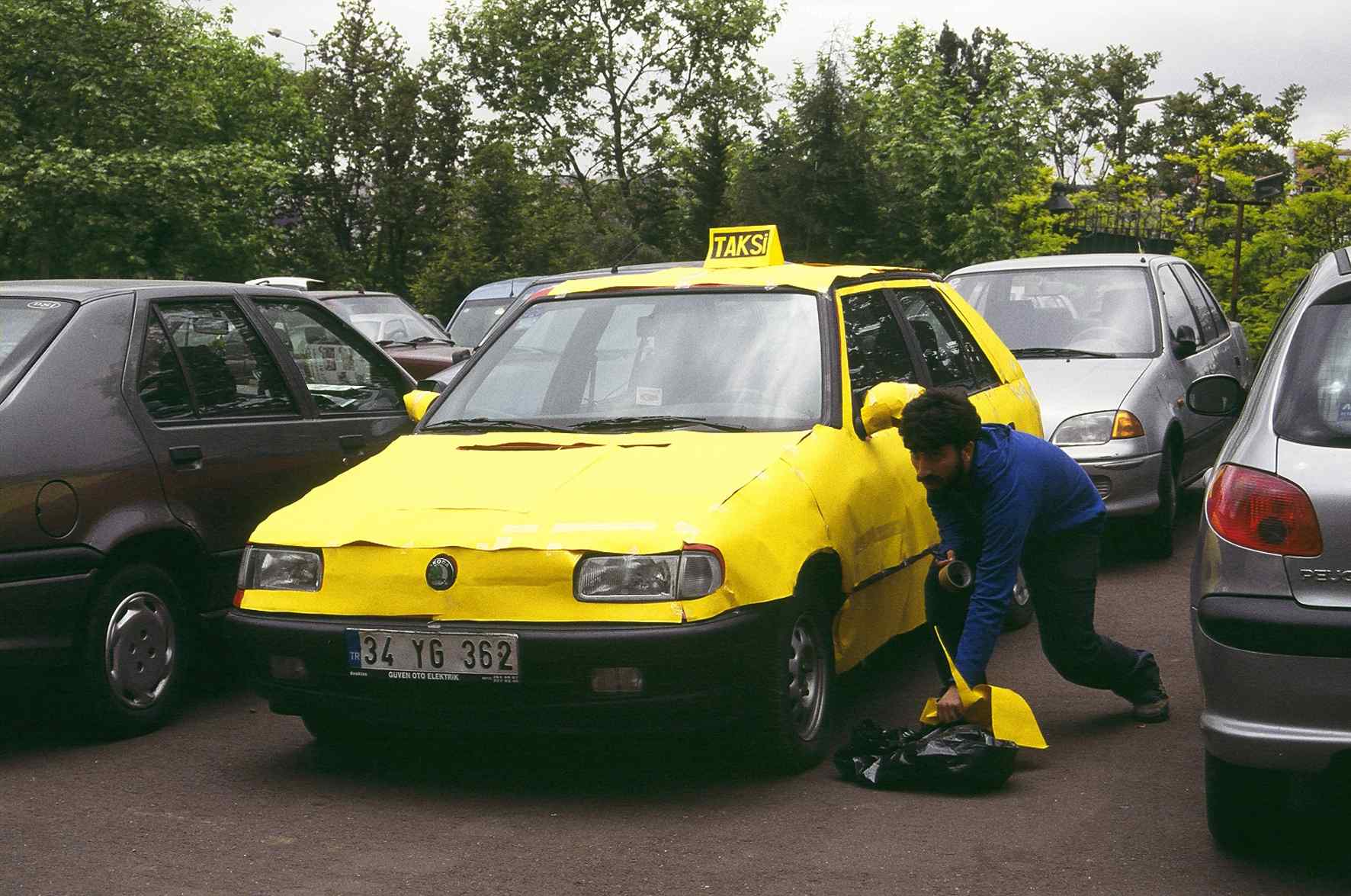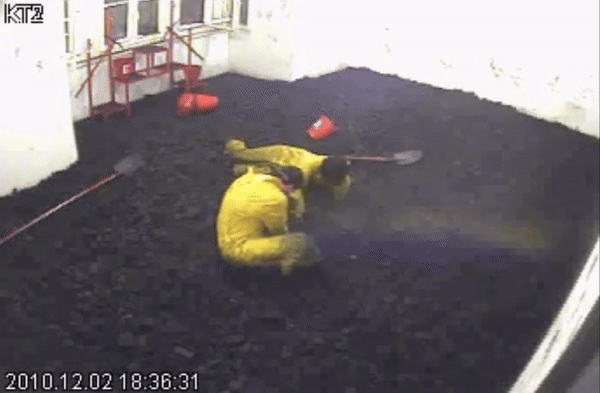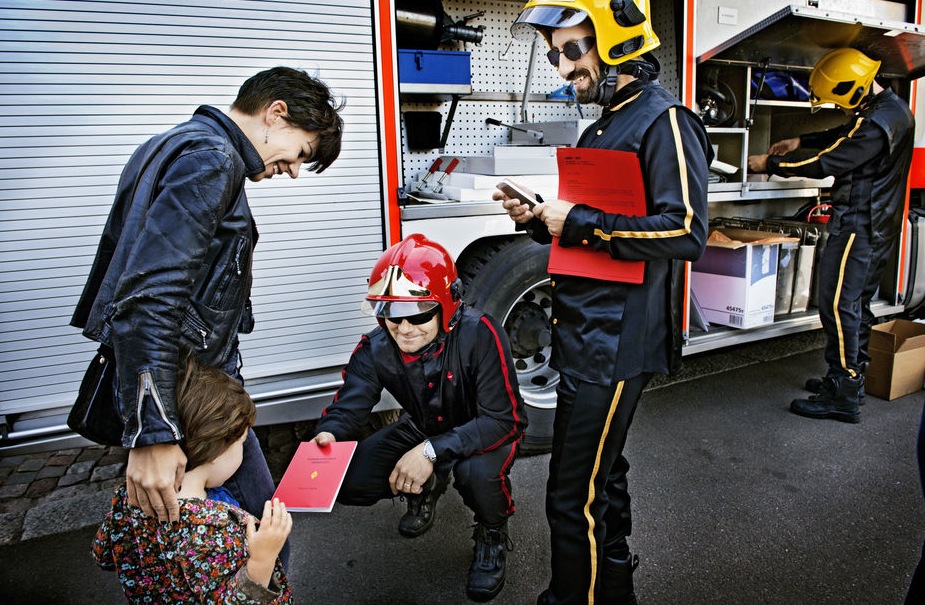
Fahrenheit 451: Reprinted
2013
Crew of the firetruck: Jaakko Väätäinen, Jaakko Liesivuori, Kimmo Kosonen, Tero Turunen (Länsi-Uudenmaa pelastuslaitos, Mikkelän pelastusasema, Espoo) and Markus Laitinen.
Costume design: Emine Ekmen
Costumes: Noora Salmi
Graphic design: Pia Männikkö
Documentation: Maija Blåfield
Production assistant: Essi Ojanperä
Production: Tiina Erkintalo ja Saara Karhunen
Photo courtesy by: Ahmet Ögüt, Oliver Kochta-Kalleinen
Thank You:
Jussi Kivi
Markus Kahre
Oliver Kochta-Kalleinen
Erkka Nissinen
Pilvi Takala
Ulpu Tiuri ja Jukka-Pekka Takala
Reijo Alaoja / City of Helsinki, Public Works Department
Mika Honkasalo, Petri Kärkkäinen / Stara
Helsinki City Rescue Department / Käpylä Rescue station / Raimo Pajunen
Kai Ekholm / Sananvapaus ja sensuuri verkkoaikana -research project
2013
Crew of the firetruck: Jaakko Väätäinen, Jaakko Liesivuori, Kimmo Kosonen, Tero Turunen (Länsi-Uudenmaa pelastuslaitos, Mikkelän pelastusasema, Espoo) and Markus Laitinen.
Costume design: Emine Ekmen
Costumes: Noora Salmi
Graphic design: Pia Männikkö
Documentation: Maija Blåfield
Production assistant: Essi Ojanperä
Production: Tiina Erkintalo ja Saara Karhunen
Photo courtesy by: Ahmet Ögüt, Oliver Kochta-Kalleinen
Thank You:
Jussi Kivi
Markus Kahre
Oliver Kochta-Kalleinen
Erkka Nissinen
Pilvi Takala
Ulpu Tiuri ja Jukka-Pekka Takala
Reijo Alaoja / City of Helsinki, Public Works Department
Mika Honkasalo, Petri Kärkkäinen / Stara
Helsinki City Rescue Department / Käpylä Rescue station / Raimo Pajunen
Kai Ekholm / Sananvapaus ja sensuuri verkkoaikana -research project
Ahmet Ögüt’s Fahrenheit 451: Reprinted brings together fire fighters and the freedom of speech.
The title refers to Ray Bradbury’s novel Fahrenheit 451 (1953) and the film version by Francois Truffaut (1953). In the novel and film, firemen destroy books by burning them. Fahrenheit 451 is the temperature at which paper ignites.
Fahrenheit 451: Reprinted reverses the concept and brings forbidden books to people with the help of a fire engine and its crew. Ögüt has chosen a selection of books that have been banned on seemingly absurd or unexpected grounds. Participants can select a book of their choice and the fire crew will print a copy for them using equipment placed in their vehicle.
Firetruck crew was touring Helsinki and Espoo between 24 August -1 September 2013, printing and giving away around 1500 books for free.
In partnership with Leevi Lehto (NTAMO)
Fahrenheit 451: Reprinted was commisioned by Checkpoint Helsinki
*this photo: courtesy of Hufvudstadsbladet
The title refers to Ray Bradbury’s novel Fahrenheit 451 (1953) and the film version by Francois Truffaut (1953). In the novel and film, firemen destroy books by burning them. Fahrenheit 451 is the temperature at which paper ignites.
Fahrenheit 451: Reprinted reverses the concept and brings forbidden books to people with the help of a fire engine and its crew. Ögüt has chosen a selection of books that have been banned on seemingly absurd or unexpected grounds. Participants can select a book of their choice and the fire crew will print a copy for them using equipment placed in their vehicle.
Firetruck crew was touring Helsinki and Espoo between 24 August -1 September 2013, printing and giving away around 1500 books for free.
In partnership with Leevi Lehto (NTAMO)
Fahrenheit 451: Reprinted was commisioned by Checkpoint Helsinki
*this photo: courtesy of Hufvudstadsbladet

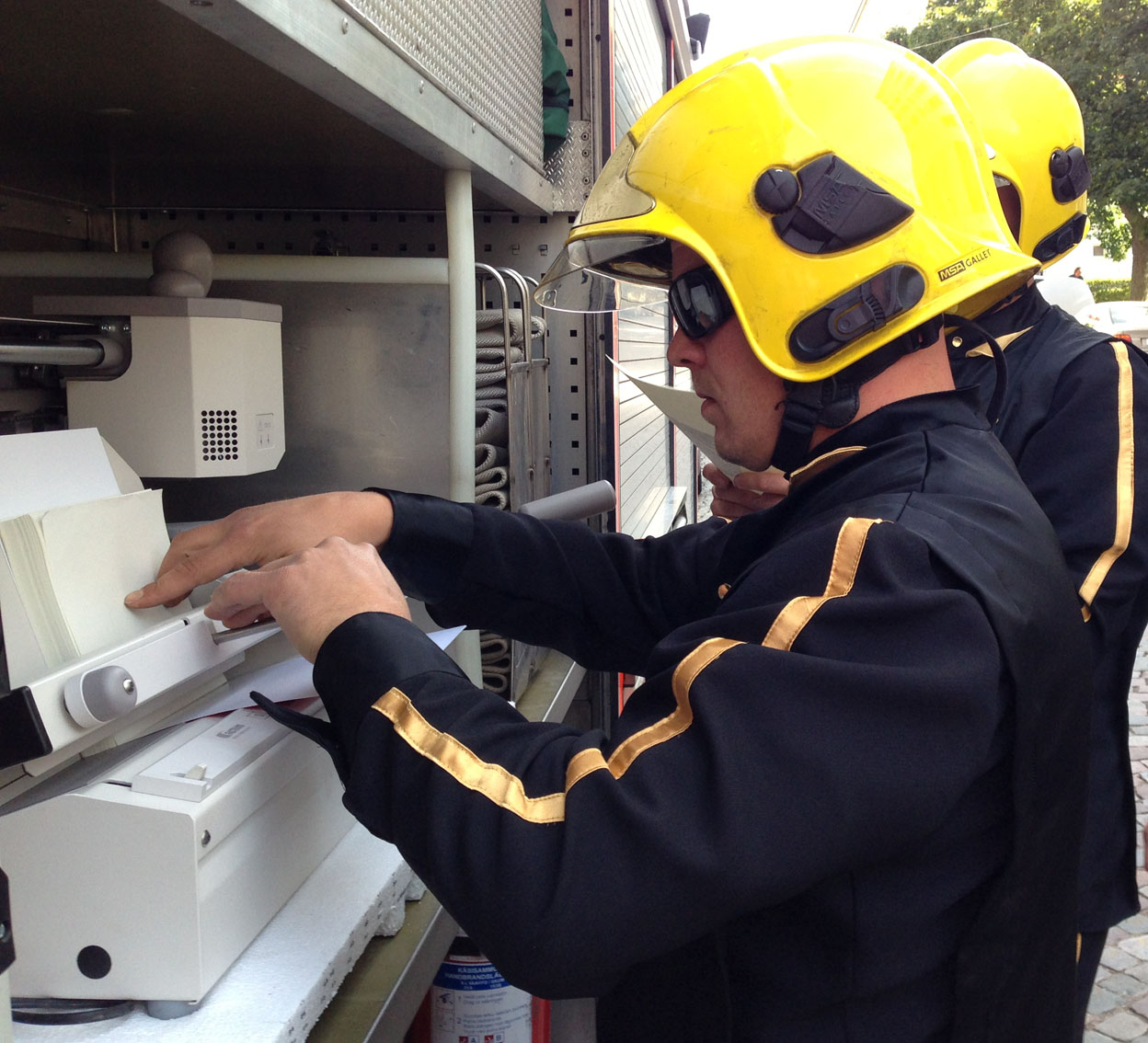





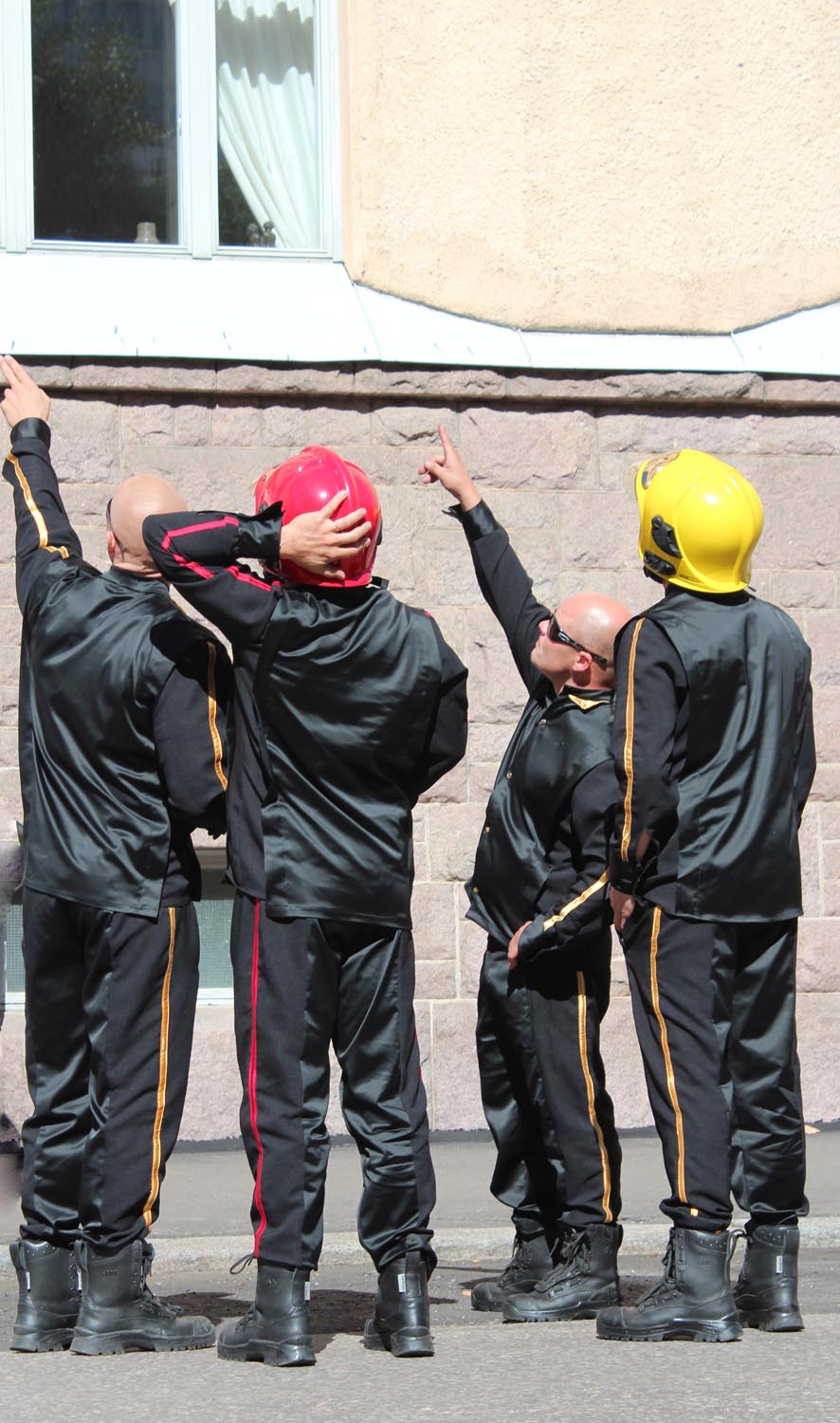

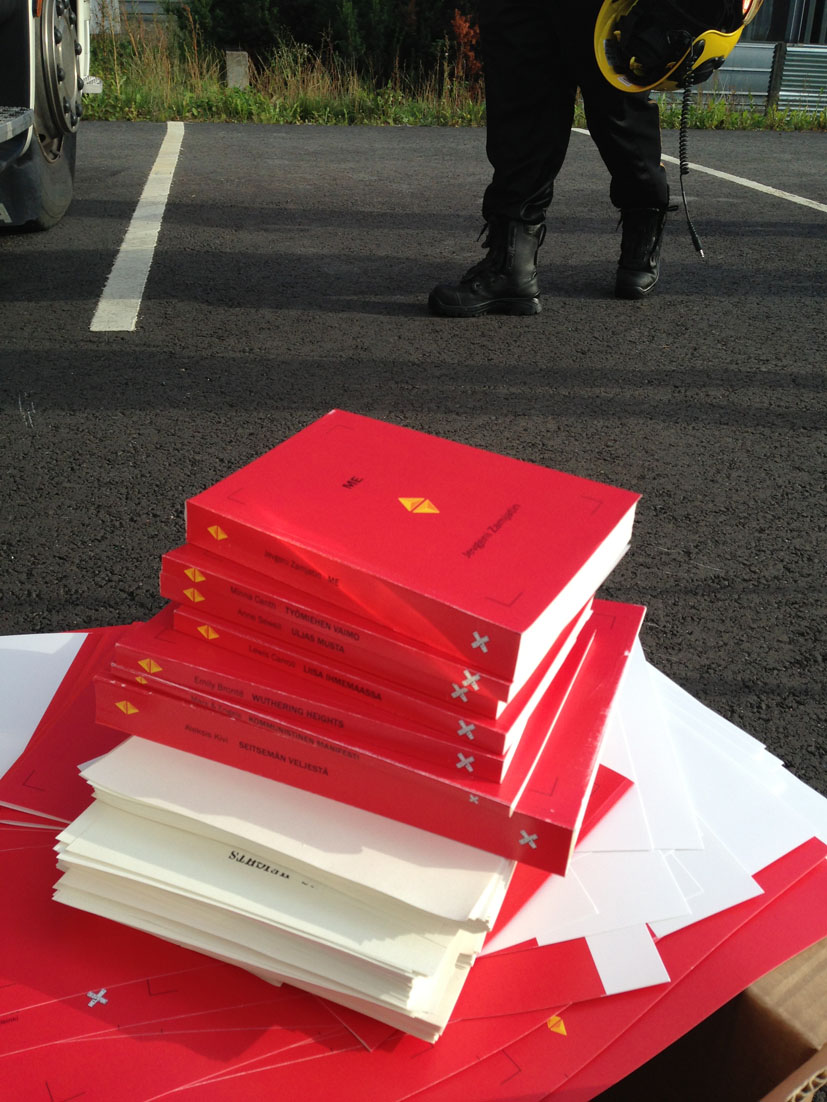

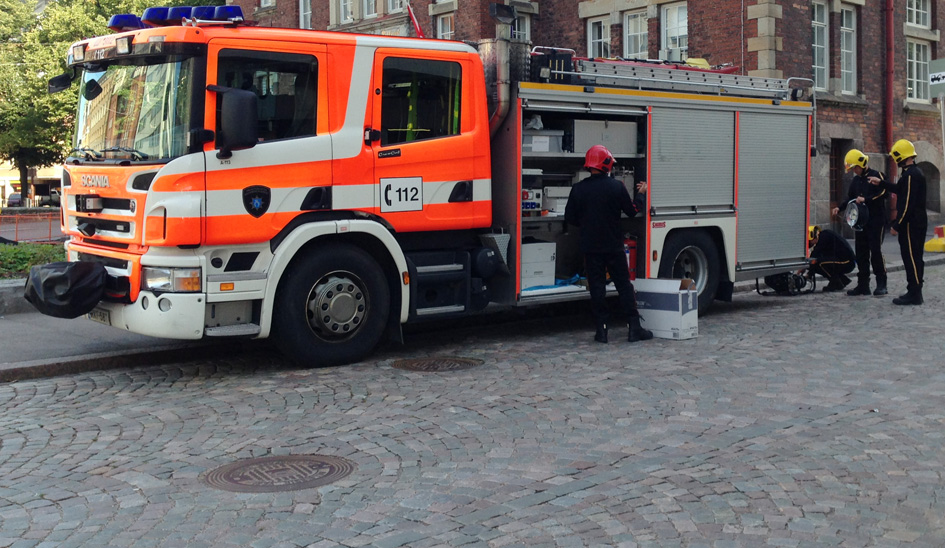

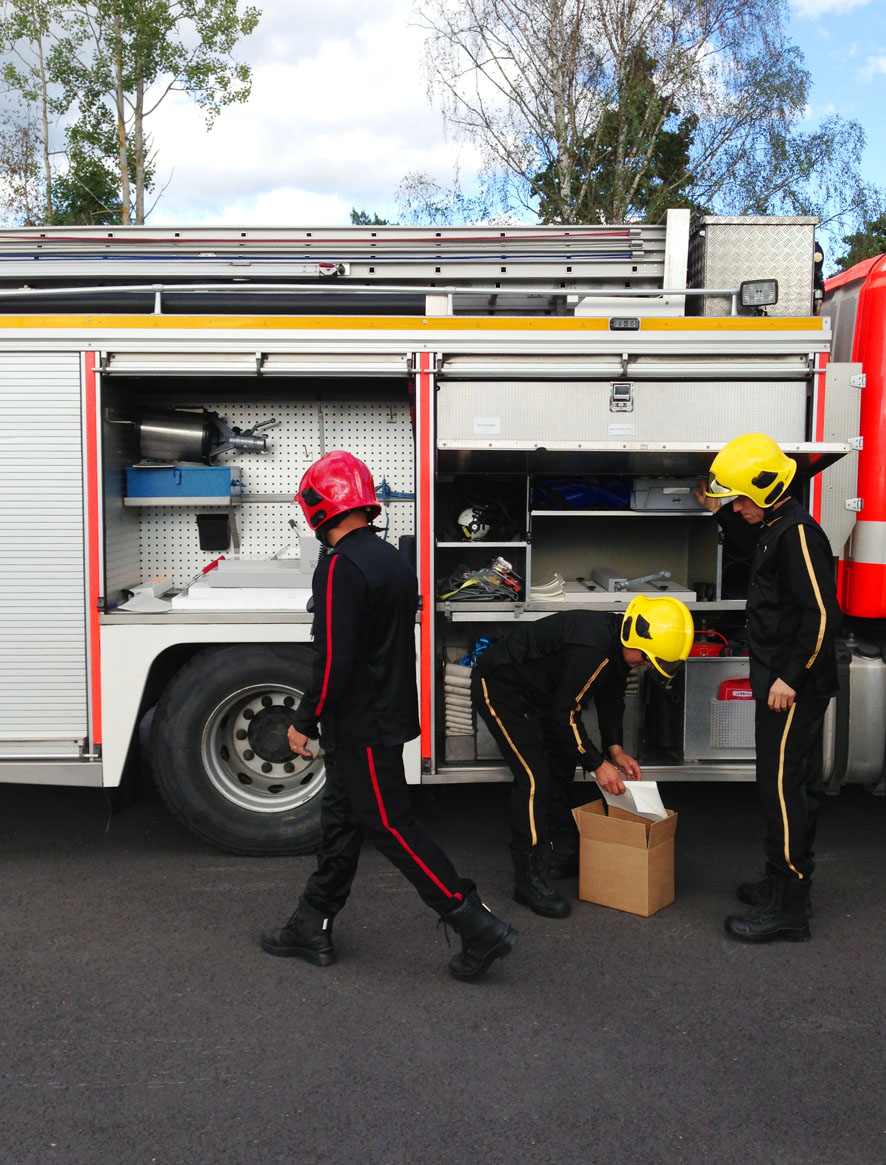
List of Reprinted Banned Books
ANIMALS SHOULD NOT SPEAK
Lewis Carroll: Alice’s Adventures in Wonderland (1865)
Lewis Carroll’s nonsense-classic, was banned in China in 1931 because of its depiction of talking animals. According to the authorities, it equated animals and humans; "Animals should not use human language."
WRONG COLOUR, WRONG NAME
Bill Martin Jr.: Brown Bear, Brown Bear, What Do You See?(1985)
The Texas Board of Education removed Brown Bear, Brown Bear, What Do You See?, a children’s title, from its 3rd Grade reading list because its brief text includes the verse "I see a red bird”. This was considered ideologically suspicious, especially because a Marxist theorist and professor of philosophy of the same name (although a different person) had published a book titled “Ethical Marxism”.
NOT BANNED, YET BANNED
Marx & Engels: The Communist Manifesto (1848)
The Communist Manifesto was banned in Turkey in 1971 under Articles 141 and 142 of the Criminal Code, which defined communist propaganda as a criminal offence. The articles were abolished in 1991 but the book remains banned in prisons and state schools, with the authorities citing the repealed articles.
WRONG FUTURE
Yevgeny Zamyatin: We (1921)
We depicts forbidden love in society of the future and has been considered the inspiration for later dystopias, such as Huxley’s Brave New World, Orwell’s 1984 and Bradbury’s Fahrenheit 451. Censorship plays a central role in all these novels, and they have also been censored and banned. Immediately following its publication in the Soviet Union in 1921, We became the first book to be banned by the Soviet censorship bureau Goskomizdat due to its critique of the political establishment.
WRONG WORD
Anne Sewell: Black Beauty (1877)
Black Beauty was banned in South Africa in 1955 because the word black is used in the title. Set in 19th century England, the book was assumed to be about black rights, even though Black Beauty is a horse.
OBSCENE, YET NOT OBSCENE
James Joyce: Ulysses (1922)
Ulysses represents the numerous works of fiction that have been censored due to their immoral and obscene content. The journal that originally published the 13th chapter of Ulysses was confiscated in the USA, and after its release, the book remained banned for significant period in the USA and UK. In 1932, an American court withdrew the ban, stating that ”Ulysses is not pornographic.”
TOO ANTI-WAR
Aristophanes: The Clouds (422 BC)
The Clouds and other classical plays were banned by the Greek military regime in 1967 because they were considered too anti-war.
TOO RADICAL
Jack London: The Call of the Wild (1903)
Jack London’s early novel, said to be his most widely read title, was banned in the USA for depicting the Great Gold Rush of the West Coast in a manner that was deemed too realistic. In the 1920s, it was banned in Italy and Yugoslavia, and later burned in Nazi Germany for being too radical.
TOO MORAL
Leo Tolstoy: The Kreutzer Sonata (1889)
The Kreutzer Sonata is a tale of jealousy and violence that portrays a conflict between sexual desire and moral norms, defending the latter. It was banned immediately following its publication in Russia, and later in the United States, because of the sections depicting obsessive jealousy. Theodore Roosevelt, the President of the United States, labelled the author a ‘sexual moral pervert’.
TOO REALISTIC
Minna Canth: The Worker's Wife (1885)
The Worker's Wife is a critique of male alcohol consumption and male dominance within marriage. Like other realistic writings of the time, it faced accusations of being immoral.
TOO PACIFISTIC
Juhani Aho: Hermit of Peace (1916)
Hermit of Peace is a short, pacifistic-utopian story about a man who protests against the horrors of the war and the brutality of the world. Six pages of it were censored during World War I, including the sentence: ”A human being should not be slaughtered or made to slaughter for any ideology, no matter how grand it may be.”
PUBLISHED IN THE WRONG COUNTRY
Aleksis Kivi: Seven Brothers (1870)
An entire edition of this Finnish classic, printed in Petrozavodsk, was destroyed on the orders of the Finnish Army during the Continuation War along with other books printed in the Soviet Union. Aleksis Kivi’sSeven Brothers was first published in the Finnish Literature Society’s series of short stories. The publication of the remaining sections was postponed due to the negative response to the earlier installments.
WRONG OUTFIT
Sait Faik Abasiyanik: Birtakim insanlar (1944)
Birtakim Insanlar (A Set of People) was confiscated by a war time military court. This was done on the grounds that one of the heroes in the book was depicted wearing a military greatcoat.
TOO SUPERNATURAL
Emily Brontë: Wuthering Heights (1847)
Now considered a classic, Emily Brontë’s Wuthering Heights was met with disapproval on its initial publication (under the nom de plume of Ellis Bell) due to its “supernatural” content and depictions of violence and passion. It was re-issued after the author’s death edited by her sister Charlotte. At least one film version of the novel has also faced a ban.






